The main criteria and strength of a macro lens is its capability of delivering full 1.0x magnification at their closest focus distance (also known as 1:1 magnification). In other words, you can fill the entire image sensor of your camera with a very small subject, something with the size of a fly for example. That capability enabling you to have a magnificent level of enlargement and magnification when viewing your images on screen or in print.
Someone may say why to bother ourselves with the special macro lens while we can get very close to the subject, or just zoom in and then crop the photo to fill the frame. The answer to these situations is obviosity clear, it is not always convenient to get that close to your subject, for example when shooting a small insect you may scare it and it will disappear. As for cropping the photo in post-processing, you will lose image details, your image will suffer degradations in quality, and color.
What is a Macro lens?
Macro is essentially the opposite of wide-angle. Where a wide-angle lens makes a big world fill the shot, a macro allows that little object to fill the screen. a macro lens allows you to get up close and personal with the subject without disturbing their environment enough to make them behave in an unacceptable way. This can be done from the minimum focusing distance, which varies based on the focal length of the lens. The longer the focal length (higher number), the further away you can be because the focal length does the work of bringing the subject in close.
Another aspect of macro photography is the shallower depth of field. That is the area behind your subject, will blur in the resulting image. Shallow means the blur increases; this is perfect for those shots where you want to see the antenna on that subject.
The design of a macro lens would increase the distance between the lens and the sensor. This greater distance allows your camera to magnify the subject many times over to create that larger than life effect. The longer this tube is, the shorter your focusing distance (distance from the lens to subject). Macro lenses can be used for standard types of photography, but that magnification will be a constant no matter how far away you get. In other words, shoot a non-macro and a macro of the same focal length, and you will always seem like you’re closer in the macro’s resulting image. The good news is that this means macros can also be used as multipurpose lenses, too.
What is magnification?
Magnification describes the size of an object that appears on your camera’s sensor, compared to its size in real-life. For example, if the image on your camera’s sensor is 50% as large as the actual object, then the magnification is said to be 1:2 or 0.5X. In other words, the more magnification you have, the smaller an object can be and still fill the image frame. For comparison, a standard lens of the same focal length but not designed as a macro might shoot at a magnification of 0.1x.

Criteria you should consider when choosing a macro lens:
-
The camera mount:
There are different types of lenses for Canon consumer interchangeable lens cameras; these include EF, EF-S, EF-M, and RF. When it comes to choosing your lens, you need to ensure that you are selecting a lens that will work with your camera. The easiest way to find out which lenses your camera will accept is to look at the indicators on lens mount on the front of your camera.

If you see a red circle on the lens mount, your camera will accept EF lenses.
If you see a red circle and a white square, it will accept Ef and EF-S lenses.
If you see a white circle it will accept only EF-M lenses.
-
Focal Length
It really depends on the shots you are planning to take. Normally the 50mm range is good for stationary objects. The sweet spot for many macro photogs is 100mm, a medium telephoto range. For even more working distance, look for those super-telephoto lenses clustered around 200mm.
-
Aperture
The lower the aperture number, the wider the shutter opening is, allowing more light into the lens to hit the sensor. Apertures of f/2.8 dominate the macro lens world. This value is also important if you’re planning to use your lens for other non-macro purposes too.
-
Minimum Focus Distance
This refers to the closest you can have your sensor to your subject without creating distortion or blurring in your image.
-
Magnification ratio
A macro lens has a magnification of 1x. For most of us, this magnification is going to make a substantial difference in our shots of small items.
- Image Stabilization
A camera lens with image stabilization (IS) aids you in capturing clear details without blurring resulting from camera shake. If the lens does not have IS, consider the use of a tripod.
-
Weight
Weight contributes to shake, which causes blur. Longer focal lengths and higher quality optics (like professional lenses) tend to be heavier.

Recommended macro lenses for Canon:
-
For DSLR camera (for crop sensor Canon camera- Mount EF-S)
EF-S 35mm f/2.8 Macro IS STM

The Canon EF-S 35mm f/2.8 Macro IS STM is an EF-S lens, which means you can only use it with Canon’s APS-C cameras. The lens features a unique built-in Macro Lite technology to illuminate close-up subjects. It has a 1.0x magnification, with a close focusing range of just 0.13 meters. It also features an Optical Image Stabilizer with Hybrid IS and a 7-blade circular aperture. The lens has a Super Spectra Coating that has been designed to reduce ghosting and flare. Definitely consider purchasing this if a product, jewelry or food photography is your thing.
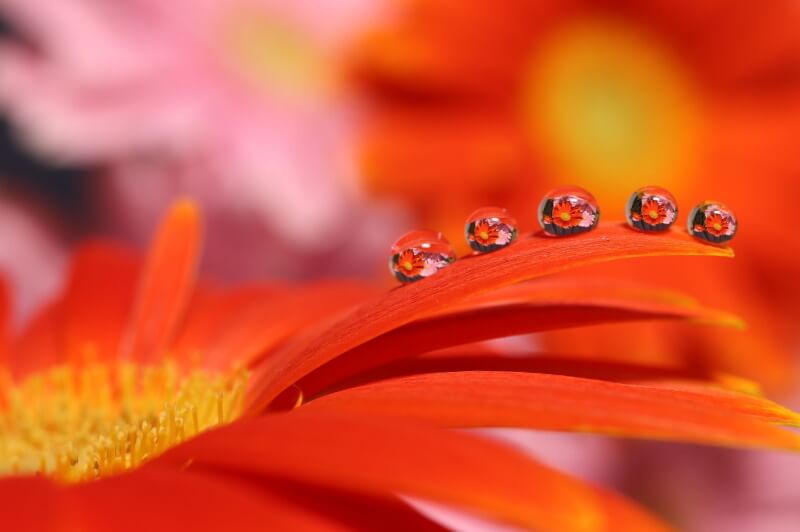
EF-S 60mm f/2.8 Macro USM
The EF-S 60mm f/2.8 Macro USM from Canon is an EF-S-mount prime designed for APS-C-format DSLRs. this lens affords a life-size 1:1 maximum magnification along with a 7.9″ minimum focusing distance. The optical design affords a high degree of sharpness and resolution across the image frame and individual elements have been treated with a Super Spectra coating to minimize lens flare and ghosting for greater contrast and color accuracy when working in strong lighting conditions. The lens also employs an Ultrasonic Motor along with an internal focusing design to realize quick, quiet, and precise autofocus performance as well as full-time manual focus override.
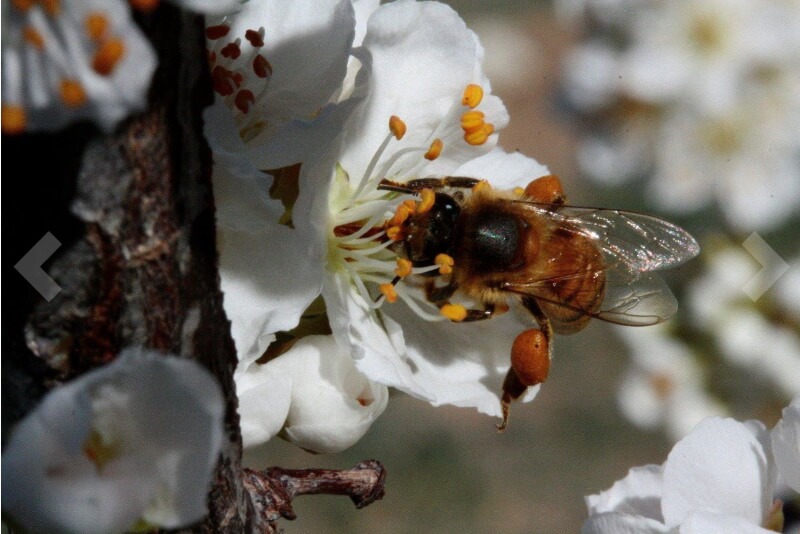
-
For DSLR camera (for full-frame Canon camera- Mount EF)
EF 100mm f/2.8L Macro IS USM
The EF 100mm f/2.8L Macro IS USM from Canon is a versatile L-series short telephoto prime that is also well-suited for portraiture and other mid-range subjects. As a macro lens, however, this 100mm offers a life-size, 1:1 maximum magnification, and an 11.8″ minimum focusing distance. Complementing close-up shooting, an Image Stabilizer is featured that minimizes camera shake by two stops at full 1:1 magnification or up to four stops at lower magnifications for sharper handheld shooting. The ring-type USM and internal focusing design offer quick, quiet, and accurate autofocus performance along with a full-time manual focus override. Regarding its optical assets, one ultra-low dispersion element is featured, to control color fringing and chromatic aberrations, and a Super Spectra coating has been applied to suppress flare and ghosting for improved contrast and color fidelity. Additionally, as an L-series lens, this 100mm f/2.8 is weather-sealed for working in inclement conditions.

EF 100mm f/2.8 Macro USM
The EF 100mm f/2.8 Macro USM from Canon mixes a comfortable short telephoto focal length with a short working distance. As a macro lens, first and foremost, this lens affords a life-size, 1:1 maximum magnification along with a 1′ minimum focusing distance and the 100mm focal length is also well-suited for portraiture and other mid-length subjects. Benefitting image quality, one ultra-low dispersion element is featured, which limits color fringing and chromatic aberrations for high clarity, and a Super Spectra coating is also applied to suppress flare and ghosting for improved contrast. A three-group internal floating focusing system is also used to maintain image quality throughout the entire focus range and Ultrasonic Motor provides quick and quiet autofocus performance, along with full-time manual focus control.

EF 180mm f/3.5L Macro USM
The EF 180mm f/3.5L Macro USM from Canon is an L-series prime well-suited for high-detail shooting with a comfortable working distance. For macro applications, this lens affords a life-size, 1:1 maximum magnification along with a 1.6′ minimum focusing distance; however, its long focal length is also ideal for portraiture and other closely cropped mid-length shooting needs. Concerning its optical design, three ultra-low dispersion elements are used to control color fringing and chromatic aberrations and a Super Spectra coating has been applied to reduce flare and ghosting. Benefitting these assets is an internal floating focusing system that works to maintain image quality throughout the entire focus range. An Ultrasonic Motor is used to provide quick and quiet autofocus performance, along with full-time manual focus, and a Focus limit function helps to ensure fast focus speeds. Additionally, this lens is weather-sealed for use in trying environmental conditions and it has a removable rotating tripod collar to benefit from working with a tripod or monopod.

Sigma 105mm F2.8 EX DG OS HSM Macro Lens
The Canon EF-mount 105mm f/2.8 EX DG OS HSM Macro from Sigma is a short-telephoto prime characterized by its ability to achieve a 1:1, life-size magnification along with a 1′ minimum focusing distance for macro applications. The optical design employs two SLD elements to virtually eliminate chromatic aberrations and color fringing throughout the focusing range for improved clarity and color rendering. A Super Multi-Layer Coating has also been applied for greater contrast when working in strong lighting conditions.
Balancing the optical assets, this lens also features a floating internal focus design that maintains consistent sharpness throughout the focusing range. A Hyper Sonic Motor affords quick and quiet autofocus performance while an Optical Stabilizer minimizes the appearance of camera shake for sharper handheld shooting.

Tamron AF 90mm f/2.8 Di SP A/M 1:1 Macro Lens
Optimized for close-up shooting, the SP 90mm f/2.8 Di Macro 1:1 VC USD Lens from Tamron is a short telephoto prime designed for full-frame Canon EF-mount DSLRs. Offering a life-size maximum magnification ratio of 1:1, this lens benefits working with small and nearby subjects and employs a Floating System for maintained image quality throughout the 11.8″ to infinity focusing range. One Low Dispersion and two Extra-Low Dispersion glass elements are incorporated into the optical design to minimize chromatic aberrations and color fringing for clean, consistent sharpness and clarity throughout the magnification range. BBAR and eBAND coatings have also been applied to minimize flare and ghosting for increased contrast when working in strong lighting conditions, and a rounded nine-blade diaphragm contributes to a pleasing bokeh quality to benefit shallow depth of field imagery. As an update to the classic 90mm macro, this enhanced version is well-suited to the high-resolution crop of DSLRs and blends timeless appeal and functionality with current imaging performance.

-
For mirrorless camera (crop sensor- Mount EF-M)
EF-M 28mm f/3.5 Macro IS STM
The compact EF-M 28mm f/3.5 Macro IS STM for EOS M series digital cameras is the world’s lightest autofocus lens and the world’s first macro lens with a built-in Macro Lite, designed to help new and more advanced users close in to capture these incredible details. The built-in, forward-facing Macro Lite helps illuminate hard-to-capture subjects for bright, vibrant photos showing off big, bold details. The world’s first autofocus lens capable of focusing to infinity in normal shooting and Super Macro Mode provides magnification up to 1.2x, allowing for incredible close-up photography. While you’re focusing that close, the Hybrid IS image stabilization helps keep the image sharp by helping to reduce blur due to camera shake. A lead screw-type STM stepping motor means the lens is smooth and quiet during operation. The EF-M 28mm f/3.5 Macro IS STM opens up a whole new world of macro for beginner and advanced users.

-
For full-frame mirrorless camera (full frame-Mount RF)
Canon RF 35mm F1.8 MACRO IS STM
The RF 35mm f/1.8 IS Macro STM from Canon is a unique wide-angle prime mixing the versatility of a general wide lens with the specialty of a 1:2 macro optic. The advanced optical design is benefitted by a Super Spectra coating, which helps to control flare, and ghosting for greater contrast and color accuracy when working in bright or backlit conditions. Capable of focusing down to 6.7″ at half-size, this lens is ideal for photographing everything from close-ups of plants to street scenes and landscapes. The bright f/1.8 maximum aperture offers increased control over depth of field and also suits working in a variety of lighting conditions. Complementing this is a five-stop-effective image stabilization, which minimizes the appearance of camera shake for sharper handheld shooting. Also, an STM motor affords impressively quiet and smooth autofocus performance and full-time manual focus override. Additionally, a configurable Control Ring lets you adjust exposure settings, including ISO, aperture, and exposure compensation, from the lens itself.
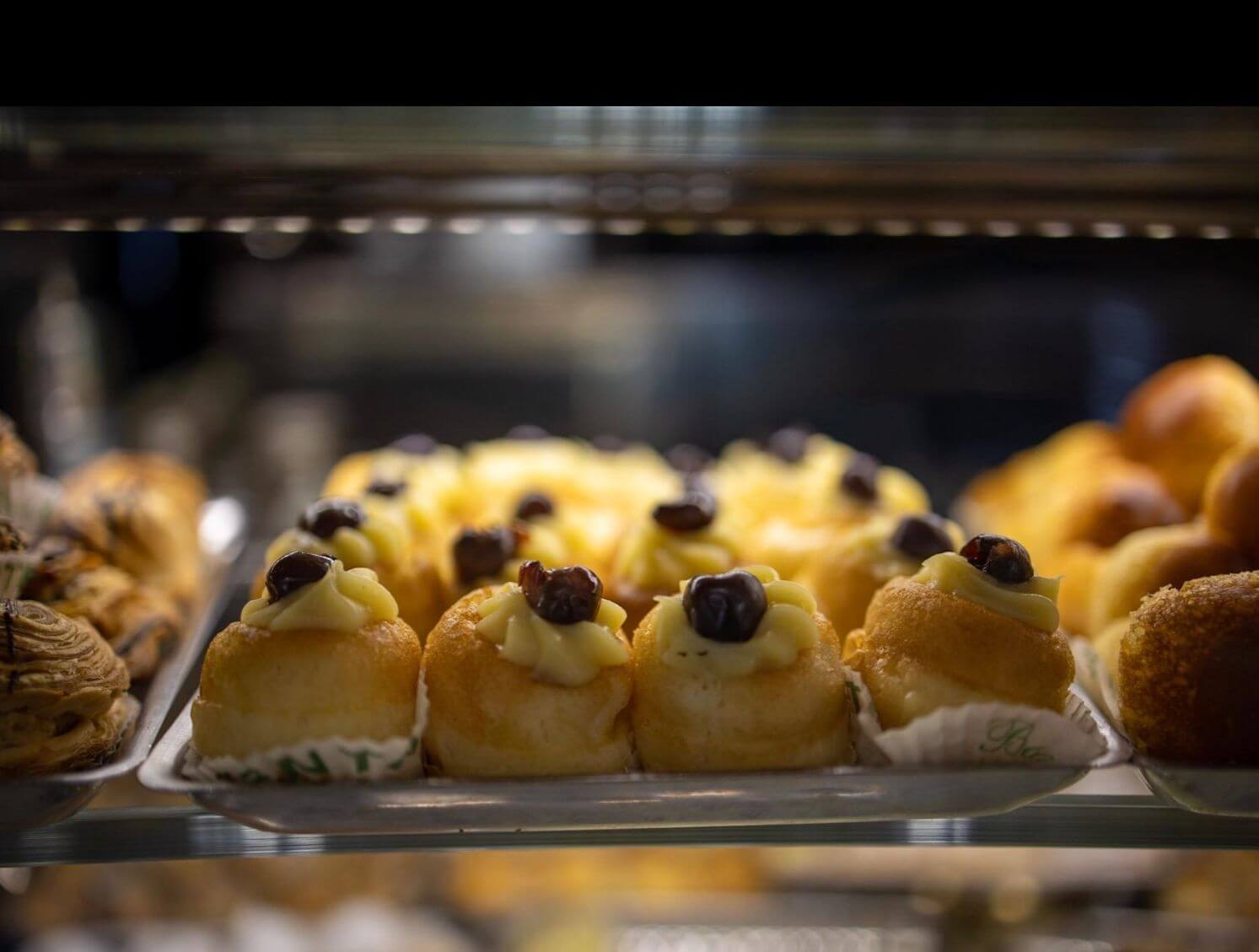
Related Posts:
Macro Photography Tips And Tricks – Guidelines & Examples
Using Of Extension Tubes In Macro Photography – Your Full Guide!
An Overview of Reverse Lens Technique for Macro Photography
Tokina 100mm Macro Review – Best Lens On Budget?
The Macro Lenses Explained – Samples & Recommendations
Thanks for reading, I hope you enjoyed the article if you have any questions just post them below & I will be happy to answer you.
If you enjoy the site, don’t forget to subscribe, we will only inform you when a new article is posted.






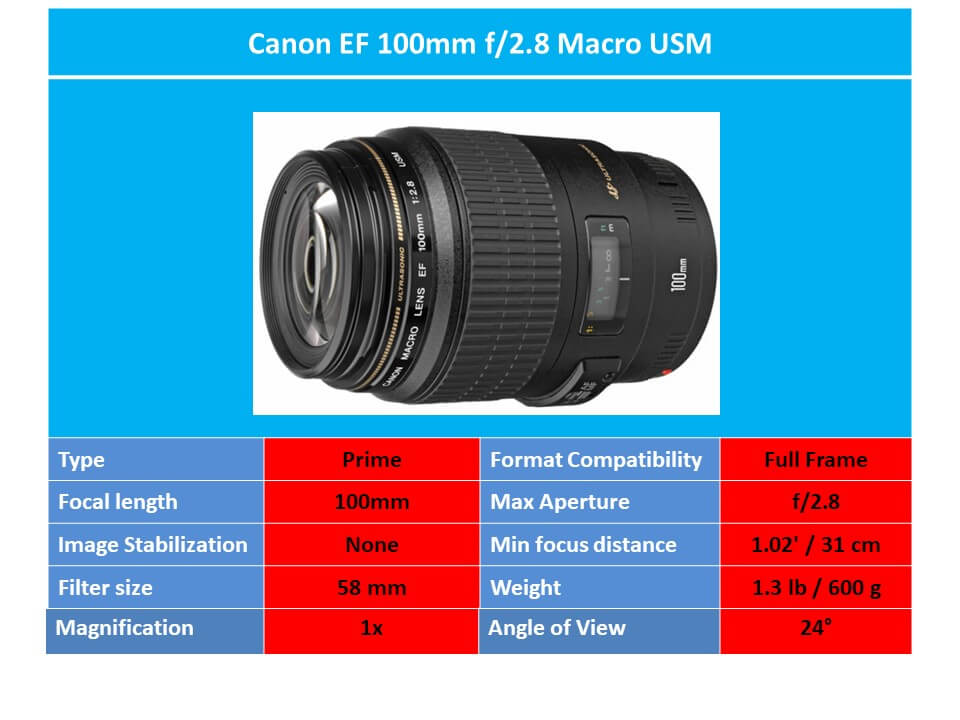


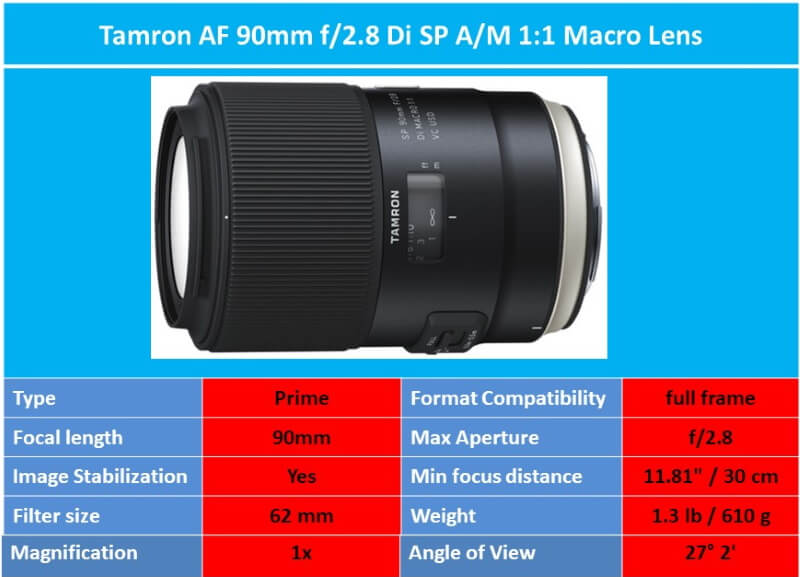
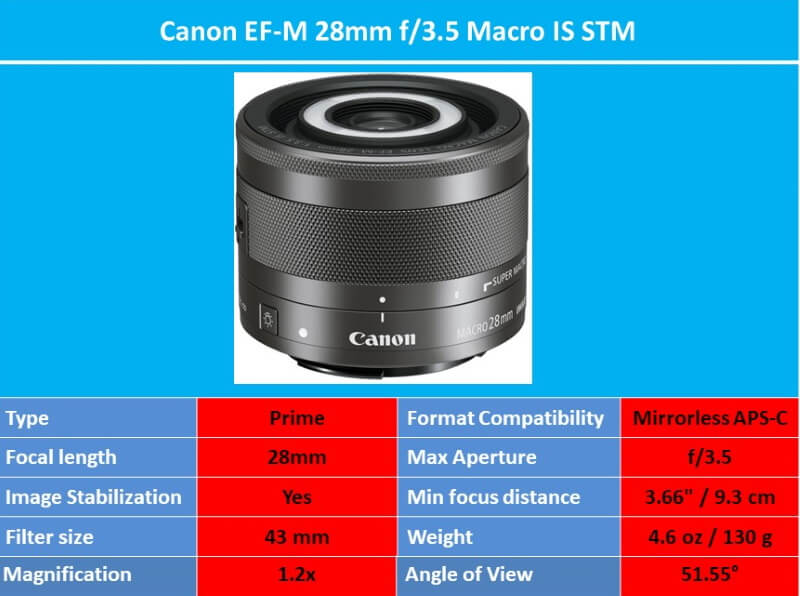
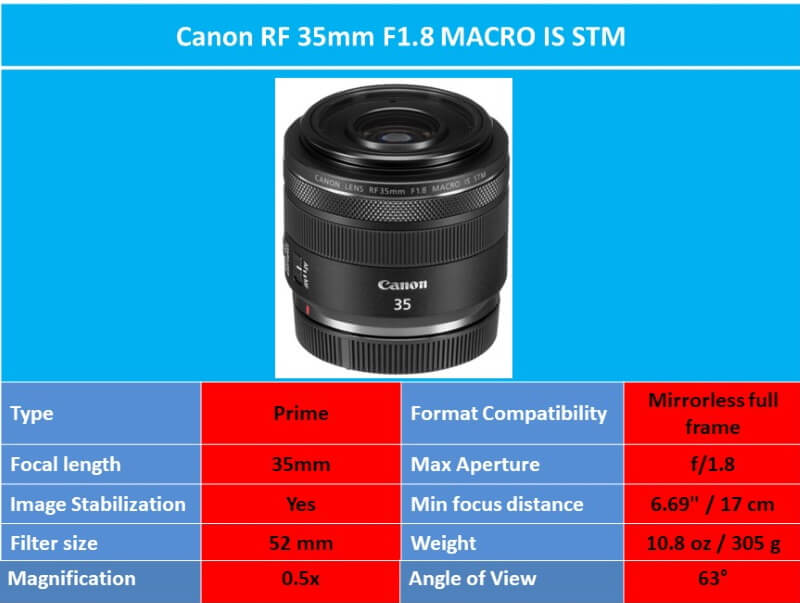

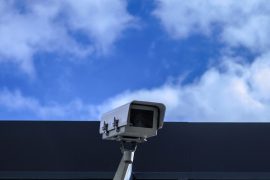
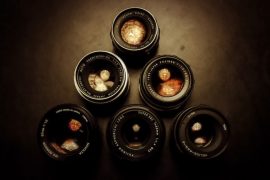
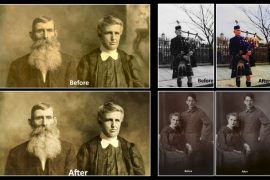

Photography is one skill that requires you to have good equipments like macro Lens that you’ve mentioned here. Magnification at the closest view is a very beautiful part of photography that requires a strong and good lens capability to achieve it at the peak of beauty. Thanks for recommending those lenses, they’ll be useful for photographers.
Very great one to see here and I found it interesting. Getting a better quality lens can make a whole lot of difference when taking snapshots. Though I do not really take photography exceptionally serious. This is massive to see here and well worthy here. Thumbs up to you for sharing all of these here for the benefits of all. Some nice quality lenses you have talked on here. Very interesting one here
Thanks for the comment.
Hello Amin, I didn’t know that there are different types of lenses for specific purposes. I have to say that this is a beauty to see and learn from. I feel the importance of getting macro lens big I wan to know because I would be going into nature pictures, which lens is the best for this type of photography and do you think the macro lens is good for landscape pictures
Hi Henderson
The macro lens is designed to allow you to get closer to your subject, and it magnifies the subject to fill your photo frame. it very useful when shooting small subjects like insects, flowers, and jewelry. You can check my post “The Macro Lenses Explained – Samples & Recommendations” for more detailed information about Macro photography.
But for the landscape photos, it is another thing you want to capture a wide scene, and you actually will be far away. If you are interested in choosing landscape lenses, you may check my post “Best Canon Lenses For Landscape – Top 5 You Need To Know“
Thanks for your feedback.
Having a good lense for your camera can make the whole activity fun for you, but if the reverse is the case, it may be really boring, especially for those of us who do it for fun. I love snapping, but I don’t do it professionally and since the last lense of my camera got bad, its been really had having some bad quality pictures. In getting a new one, i would love to get the EF-S 60mm f/2.8 Macro USM. Thanks for sharing.
Thanks for your comment, the Canon EF_S 60mm f/2.8 is a good lens. My favorite is EF-S 35mm f/2.8 Macro IS STM, It is even cheaper than the 60mm.